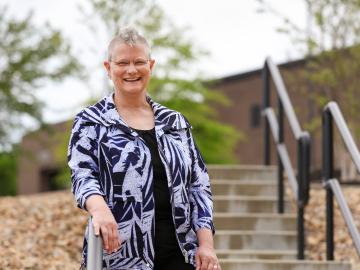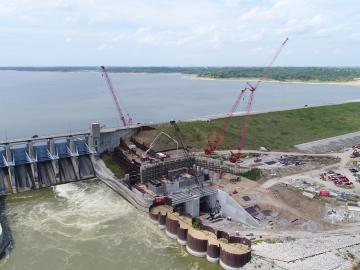
Filter News
Area of Research
- (-) Energy Science (15)
- (-) Isotope Development and Production (1)
- (-) Supercomputing (50)
- Advanced Manufacturing (2)
- Biology and Environment (11)
- Computational Engineering (1)
- Computer Science (7)
- Electricity and Smart Grid (1)
- Fuel Cycle Science and Technology (1)
- Fusion and Fission (26)
- Fusion Energy (10)
- Isotopes (3)
- Materials (29)
- Materials for Computing (3)
- National Security (12)
- Neutron Science (12)
- Nuclear Science and Technology (36)
- Nuclear Systems Modeling, Simulation and Validation (1)
- Quantum information Science (9)
News Topics
- (-) Big Data (27)
- (-) Microelectronics (1)
- (-) Nuclear Energy (12)
- (-) Quantum Science (26)
- 3-D Printing/Advanced Manufacturing (81)
- Advanced Reactors (7)
- Artificial Intelligence (42)
- Bioenergy (29)
- Biology (19)
- Biomedical (22)
- Biotechnology (6)
- Buildings (39)
- Chemical Sciences (16)
- Clean Water (8)
- Composites (17)
- Computer Science (108)
- Coronavirus (25)
- Critical Materials (12)
- Cybersecurity (14)
- Energy Storage (74)
- Environment (69)
- Exascale Computing (27)
- Fossil Energy (2)
- Frontier (32)
- Fusion (2)
- Grid (41)
- High-Performance Computing (44)
- Hydropower (3)
- Irradiation (1)
- Isotopes (2)
- Machine Learning (20)
- Materials (45)
- Materials Science (41)
- Mathematics (4)
- Mercury (3)
- Microscopy (14)
- Molten Salt (1)
- Nanotechnology (15)
- National Security (11)
- Neutron Science (20)
- Partnerships (12)
- Physics (8)
- Polymers (13)
- Quantum Computing (20)
- Security (10)
- Simulation (18)
- Software (1)
- Space Exploration (7)
- Statistics (1)
- Summit (44)
- Transportation (70)
Media Contacts

ORNL and the Tennessee Valley Authority, or TVA, are joining forces to advance decarbonization technologies from discovery through deployment through a new memorandum of understanding, or MOU.

ORNL, TVA and TNECD were recognized by the Federal Laboratory Consortium for their impactful partnership that resulted in a record $2.3 billion investment by Ultium Cells, a General Motors and LG Energy Solution joint venture, to build a battery cell manufacturing plant in Spring Hill, Tennessee.

A rapidly emerging consensus in the scientific community predicts the future will be defined by humanity’s ability to exploit the laws of quantum mechanics.

A team led by the U.S. Department of Energy’s Oak Ridge National Laboratory demonstrated the viability of a “quantum entanglement witness” capable of proving the presence of entanglement between magnetic particles, or spins, in a quantum material.

A team from ORNL, Stanford University and Purdue University developed and demonstrated a novel, fully functional quantum local area network, or QLAN, to enable real-time adjustments to information shared with geographically isolated systems at ORNL

A new tool that simulates the energy profile of every building in America will give homeowners, utilities and companies a quick way to determine energy use and cost-effective retrofits that can reduce energy and carbon emissions.

Four first-of-a-kind 3D-printed fuel assembly brackets, produced at the Department of Energy’s Manufacturing Demonstration Facility at Oak Ridge National Laboratory, have been installed and are now under routine operating

As a computer engineer at Oak Ridge National Laboratory, Gina Accawi has long been the quiet and steady force behind some of the Department of Energy’s most widely used online tools and applications.

To better understand the spread of SARS-CoV-2, the virus that causes COVID-19, Oak Ridge National Laboratory researchers have harnessed the power of supercomputers to accurately model the spike protein that binds the novel coronavirus to a human cell receptor.

A new Department of Energy report produced by Oak Ridge National Laboratory details national and international trends in hydropower, including the role waterpower plays in enhancing the flexibility and resilience of the power grid.


